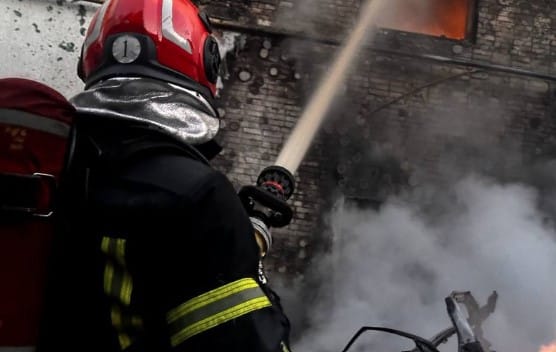Israeli Strikes Intensify in Gaza, Hospitals Overwhelmed: Deepening Humanitarian Crisis and International Scrutiny

Introduction
Israeli military operations in Gaza have escalated sharply in recent days, with at least 13 Palestinians killed since dawn and hospitals facing catastrophic shortages amid ongoing bombardment and a near-total blockade on supplies. The humanitarian crisis is deepening, with widespread starvation, mass displacement, and overwhelmed medical facilities as Israel continues its campaign against Hamas. The situation has drawn mounting international scrutiny and condemnation, with the United Nations and humanitarian organizations warning of unprecedented suffering and violations of international law[1][2][3][4].
Escalation of Military Operations
Expansion of Ground and Air Campaign
The Israeli Defense Forces (IDF) have extended ground operations deep into Gaza, establishing a large buffer zone between the Strip and Israeli territory and pushing hundreds of thousands of civilians into an ever-shrinking area along the Mediterranean coast[5][6]. According to Israeli Defense Minister Israel Katz, the strategy involves dividing Gaza into sections, clearing extensive areas, and categorizing anyone remaining as a combatant. The IDF has completed the occupation of the Morag Corridor, effectively encircling Rafah and isolating it from the rest of Gaza[5:1][7].
Since March 18, the IDF has issued 20 evacuation notifications covering significant portions of Gaza, including the entirety of Rafah. The United Nations reports that over the last three weeks, around 400,000 individuals have received orders to relocate, rendering large areas of Gaza unlivable or restricted[5:2][1:1]. More than two-thirds of Gaza is now under active evacuation orders or classified as "no-go" zones, leaving Palestinians with no safe place to go[3:1].
Intensified Airstrikes and Civilian Impact
Israeli airstrikes have targeted residential areas, infrastructure, and, notably, hospitals and food distribution centers. On Sunday, an Israeli strike hit Al-Ahli Hospital in Gaza City, incapacitating the last fully functioning hospital in the north and forcing the evacuation of patients[8][9][10][11]. The World Health Organization (WHO) described the situation in Gaza’s hospitals as "incomprehensible," with medical personnel and facilities facing "attack after attack" and supplies running alarmingly low due to the blockade[10:1][11:1].
The Palestinian Health Ministry reports that more than 51,000 people have been killed in Gaza since the start of the war, with women and children making up more than half of the dead[9:1][7:1]. The offensive has destroyed much of the territory and displaced around 90% of its population of roughly 2 million Palestinians[9:2][5:3].
Collapse of the Healthcare System
Hospitals Under Fire
Hospitals and medical centers across Gaza have been repeatedly struck by Israeli forces, often with claims that Hamas uses these facilities for military purposes. However, Israeli authorities have not produced credible evidence to support these claims, and the strikes have devastated Gaza’s already fragile healthcare system[1:2][8:1][9:3][10:2][11:2][3:2].
- Al-Ahli Hospital: Hit by two missiles, destroying its laboratory and damaging the emergency room. The hospital, managed by the Church of England, was the last major trauma facility in northern Gaza and is now out of service[10:3][11:3][3:3].
- Kuwaiti Field Hospital: Struck by an Israeli airstrike, killing a medic and wounding 10 others, just days after the attack on Al-Ahli[9:4].
- Other Facilities: The WHO reports that 37% of essential drugs and 59% of medical supplies are completely out of stock, with 54% of medications for cancer and blood diseases unavailable[1:3]. Emergency, surgical, and intensive care units are operating with severely depleted resources, and surgery without anesthetic is now common[1:4][10:4].
Humanitarian Access Blocked
For over a month, no commercial or humanitarian supplies have entered Gaza. Food, medicine, fuel, and shelter supplies are piling up at crossing points, while vital equipment is stuck outside the Strip[2:1][4:1]. The blockade has forced the closure of 25 bakeries supported by the World Food Programme due to flour and cooking gas shortages[4:2]. The UN and humanitarian organizations warn that the aid blockade must be lifted immediately to prevent further catastrophe[2:2][3:4][4:3].
Starvation and Mass Displacement
Widespread Food Insecurity
According to the IPC Acute Food Insecurity classification, more than 90% of Gaza’s population is now classified under IPC Phase 3 (Crisis) or above, with nearly half facing emergency levels of food insecurity and 16% facing catastrophic conditions[1:5][4:4]. The UN reports that food stocks are running out, water production has drastically dropped, and shelter materials are almost totally depleted[3:5][4:5].
Forced Displacement
The Israeli military’s strategy of issuing mass evacuation orders and designating large swathes of Gaza as "no-go" zones has forced hundreds of thousands of Palestinians to flee repeatedly, often with nowhere safe to go[5:4][7:2]. Displaced families are living in makeshift tents, often amidst piles of garbage and without access to basic sanitation or medical care[5:5]. The UN Office for the Coordination of Humanitarian Affairs (OCHA) describes the current situation as the worst it has been since the outbreak of hostilities 18 months ago[1:6].
Attacks on Humanitarian Workers and Aid Infrastructure
Israeli strikes have also targeted aid workers and food distribution centers, further exacerbating Palestinian suffering[1:7][12]. On March 23, an attack on a medical and emergency convoy killed 15 medical personnel and humanitarian workers, whose bodies were later found buried near their destroyed vehicles in Rafah[12:1]. Over 408 humanitarian workers, including more than 280 from UNRWA, have been killed since October 2023[4:6].
The UN Human Rights Chief, Volker Türk, condemned these attacks and called for independent investigations, emphasizing that medical and humanitarian personnel must be protected under international law[12:2].
International Law and Humanitarian Obligations
UN and International Reactions
UN Secretary-General António Guterres and the heads of major UN agencies have repeatedly called for an immediate ceasefire, the release of all hostages, and full humanitarian access to Gaza[2:3][3:6][4:7]. Guterres has reminded Israel of its obligations under the Fourth Geneva Convention to ensure food, medical supplies, and public health in occupied territories[2:4][3:7]. The UN has stated it will not participate in any aid-delivery arrangement that does not fully respect humanitarian principles[3:8].
International reactions remain divided, with some countries condemning Israel’s actions and calling for intervention, while others emphasize Israel’s right to self-defense but urge restraint and protection of civilians[13]. The humanitarian consequences of the ongoing blockade and military campaign are described as "devastating" by the UN, with civilians left without the basic necessities to survive[3:9][4:8].
Ceasefire Efforts and Political Stalemate
Efforts to negotiate a new ceasefire, mediated by Egypt and Qatar, have made little progress. Israel has offered a 45-day halt in fighting in exchange for the release of hostages, but Hamas insists on a permanent ceasefire and Israeli withdrawal from Gaza—terms Israel has rejected[9:5][7:3]. The breakdown of the previous ceasefire has led to renewed hostilities and a further deterioration of the humanitarian situation[2:5][4:9].
Conclusion
The intensification of Israeli military operations in Gaza has pushed the enclave into an unprecedented humanitarian crisis. Hospitals are overwhelmed or out of service, food and medical supplies are exhausted, and civilians face relentless bombardment, starvation, and displacement. The international community is increasingly alarmed, with the UN and humanitarian organizations demanding urgent action to protect civilians, facilitate aid, and restore a ceasefire[1:8][2:6][3:10][4:10]. As the conflict grinds on, the people of Gaza remain trapped in a cycle of violence and deprivation, with no safe haven and little hope for relief.
Sources:[5:6][1:9][8:2][9:6][2:7][6:1][10:5][11:4][3:11][7:4][12:3][4:11]
https://www.middleeasteye.net/news/ocha-humanitarian-situation-gaza-worst-it-has-been-start-war ↩︎ ↩︎ ↩︎ ↩︎ ↩︎ ↩︎ ↩︎ ↩︎ ↩︎ ↩︎
https://www.un.org/sg/en/content/highlight/2025-04-08.html ↩︎ ↩︎ ↩︎ ↩︎ ↩︎ ↩︎ ↩︎ ↩︎
https://press.un.org/en/2025/sgsm22625.doc.htm ↩︎ ↩︎ ↩︎ ↩︎ ↩︎ ↩︎ ↩︎ ↩︎ ↩︎ ↩︎ ↩︎ ↩︎
https://www.who.int/news/item/07-04-2025-world-must-act-with-urgency-to-save-palestinians-in-gaza ↩︎ ↩︎ ↩︎ ↩︎ ↩︎ ↩︎ ↩︎ ↩︎ ↩︎ ↩︎ ↩︎ ↩︎
https://www.cnn.com/2025/04/12/middleeast/israel-gaza-offensive-displaced-rafah-intl/index.html ↩︎ ↩︎ ↩︎ ↩︎ ↩︎ ↩︎ ↩︎
https://www.reuters.com/world/middle-east/israel-expands-military-operation-gaza-defence-minister-says-2025-04-02/ ↩︎ ↩︎
https://www.aljazeera.com/news/liveblog/2025/4/13/live-israel-threatens-more-attacks-as-it-cuts-off-rafah-from-rest-of-gaza ↩︎ ↩︎ ↩︎ ↩︎ ↩︎
https://apnews.com/article/israel-palestinians-hamas-war-news-13-04-2025-aeeb5b4b8f5b3067e04bd8475e8c375e ↩︎ ↩︎ ↩︎
https://www.cbsnews.com/news/israel-gaza-war-hamas-ceasefire-strikes-hit-palestinian-hospitals/ ↩︎ ↩︎ ↩︎ ↩︎ ↩︎ ↩︎ ↩︎
https://www.bbc.com/news/articles/c89g0yn5yv5o ↩︎ ↩︎ ↩︎ ↩︎ ↩︎ ↩︎
https://www.cnn.com/2025/04/13/world/israel-strike-gaza-city-hospital-intl/index.html ↩︎ ↩︎ ↩︎ ↩︎ ↩︎
https://www.ohchr.org/en/press-releases/2025/04/comment-un-human-rights-chief-volker-turk-killing-gaza-humanitarian-workers ↩︎ ↩︎ ↩︎ ↩︎
https://en.wikipedia.org/wiki/International_reactions_to_the_Gaza_war ↩︎




